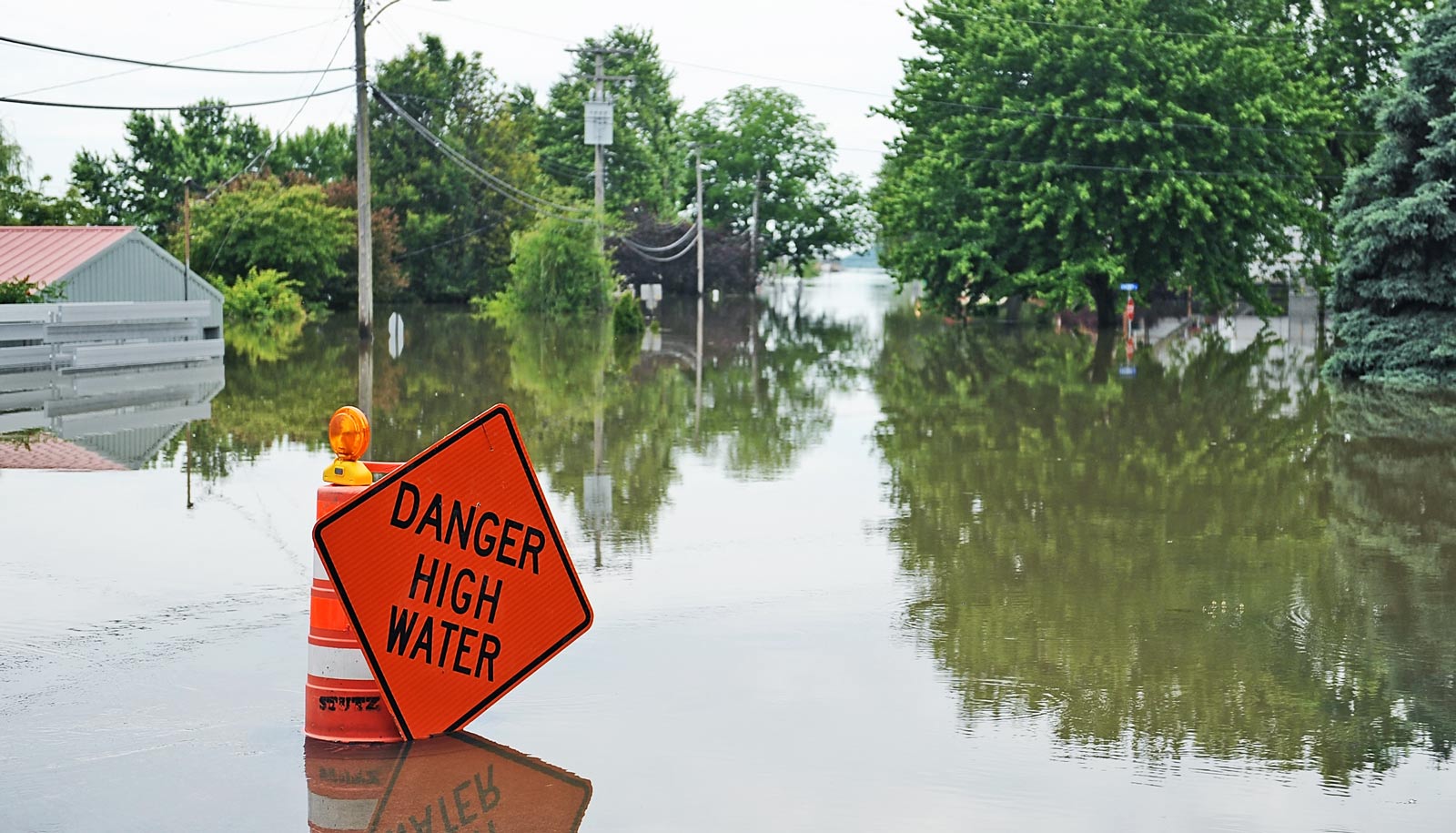By hoarding water underground, plants will contribute to future river flooding, adding to soil saturation and boosting rain runoff, researchers report.
In their new study, the researchers describe the emerging role of plant physiology in flooding. As an adaptation to an overabundance of carbon dioxide in the atmosphere, trees, plants, and grasses constrict their stomatal pores to regulate the amount of the gas they consume, a mechanism that limits the release of water from leaves through evaporation.
“Plants get more water-efficient and leak less underground soil moisture out through their pores in a carbon-rich atmosphere,” says Mike Pritchard, assistant professor of Earth system science at the University of California, Irvine, and coauthor of a new paper, published in Nature Climate Change.
“Add this up over billions of leaves in very sunlit, leafy places, especially the tropics, and it means there is a bunch more soil moisture stored up underground, so much so that climate models predict rainfall events will saturate the ground and more rain will run off into rivers.”
‘Juicing up’ future river flooding
Pritchard says this so-called forest effect dominates atmospheric responses to CO2 on most land masses up to 30 degrees north and south of the equator, which is where most people live. And this plant-based phenomenon could have a large influence on flooding in the Mississippi River basin, he says.
“I was really interested in the Mississippi because it’s in our own national backyard,” Pritchard says. “It’s a big, complex basin fed by multiple sources, but it kind of looked like the spring rains on the East Coast and the Appalachians were running off more efficiently due to these effects of plant physiology, leading to an earlier peak flow out of the Mississippi than normal, which actually makes sense. The spring rains are able to more easily run off.”
The twin effects of plant physiology in the US Southeast and precipitation anomalies caused by atmospheric warming farther north in the Mississippi basin “are both really conspiring to juice up the future flood statistics in equal proportion.”
Lead author Megan Fowler, a former graduate student in Earth system science, says that “for this study, we looked at how climate change will affect future river flows worldwide and found that instead of the usual suspects in the water cycle—changing regional rainfall from global warming or other impacts of more CO2 in the atmosphere—it’s actually how low-latitude vegetation physiology reacts to increased carbon in the air that plays an outsized role in river dynamics.”
The team used widely available tools to draw their conclusions: a hydrodynamic model to provide granular river flow data and the world’s most popular Earth system model, which researchers at the US National Center for Atmospheric Research and the US Department of Energy developed.
“Neither of these are unusual tools,” Pritchard says. “They just happen to have not been linked in this way before.”
Climate models make it possible
One uncommon approach of the study was the isolation of plant physiology effects from those of temperature. The scientists ran experiments in which they ramped up CO2 on the leaves and conducted others in which they added the gas to the atmosphere to make warming happen. Then they did both in tandem to try to determine the factors’ relative contributions to the results.
“These are the hand-of-god-type experiments that are the whole point of having climate models,” Pritchard says. “In nature, there’s no way to separate the effects of temperature and leaf physiology with heightened CO2 in the atmosphere, but we can do that quite successfully with our models.
“But now I’m realizing that addressing uncertainties like the actual magnitude of the stomatal effect in tropical ecosystems—where field experiment data is sparse—may be just as important. This is probably behind in terms of scrutiny compared to issues with clouds and rainfall that are better constrained by satellite data. Maybe it’s time to bring it down to Earth.”
Additional coauthors are from the University of Georgia and the University of California, Irvine. The US Department of Energy, the National Science Foundation, NASA, and the Gordon and Betty Moore Foundation funded the work.
Source: University of California, Irvine



